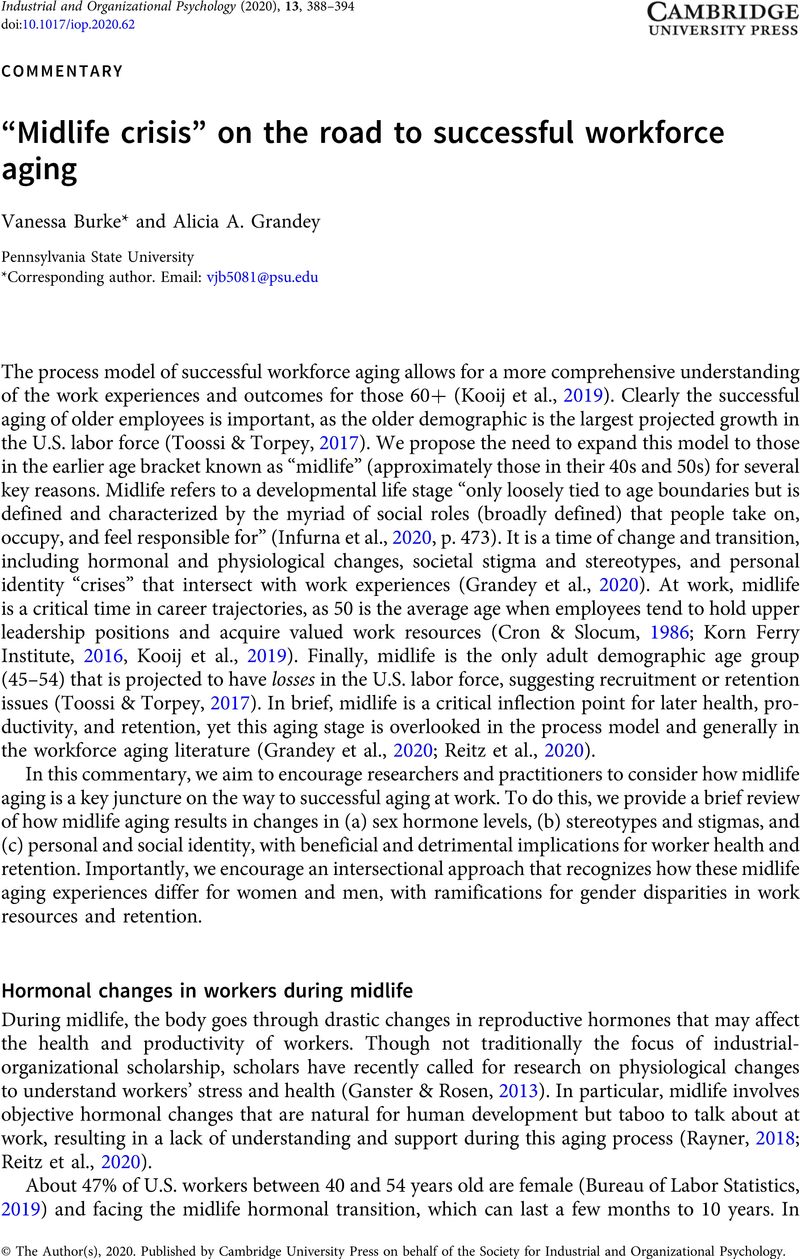Crossref Citations
This article has been cited by the following publications. This list is generated based on data provided by Crossref.
Steffan, Belinda
and
Loretto, Wendy
2024.
Menopause, work and mid‐life: Challenging the ideal worker stereotype.
Gender, Work & Organization,
Taneva, Stanimira K.
and
Peng, Yisheng
2024.
Fostering successful ageing at work: The role of cognitive job crafting, work certainty and perceived remaining time at work.
Journal of Occupational and Organizational Psychology,
Vol. 97,
Issue. 2,
p.
381.





